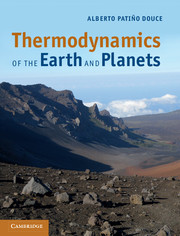In this final chapter we examine life, and in particular how life may have originated, from a strictly thermodynamic point of view. I will not get anywhere close to biochemistry, biophysics or genetics, nor will I offer a definition of life. Rather, I begin from a concept that everybody must agree upon. This is the fact that a necessary (but not sufficient!) component of the definition of life is that it is a process that never reaches thermodynamic equilibrium, for if thermodynamic equilibrium is reached then the process stops, and life is no more. Life must therefore be powered by a gradient in free energy, which for the only type of life that we know takes the form of a chemical potential gradient, i.e. a non-zero affinity. Catabolic metabolism (henceforth simply metabolism, as I will not discuss anabolic metabolism in detail) is a chemical reaction (or rather a set of coupled chemical reactions) that transfers chemical energy from reactants in an organism's inorganic environment, known as the substrate, to complex organic molecules inside the organism, such as ATP (adenosine triphosphate), that are capable of delivering this energy to structures where the chemical energy is transformed to mechanical energy (e.g. motion), electrical energy (e.g. conscience), electromagnetic energy (e.g. fireflies), etc.
Atmospheric composition, and in particular the oxidation state of the atmosphere, is one of the factors in understanding the origin of life.
